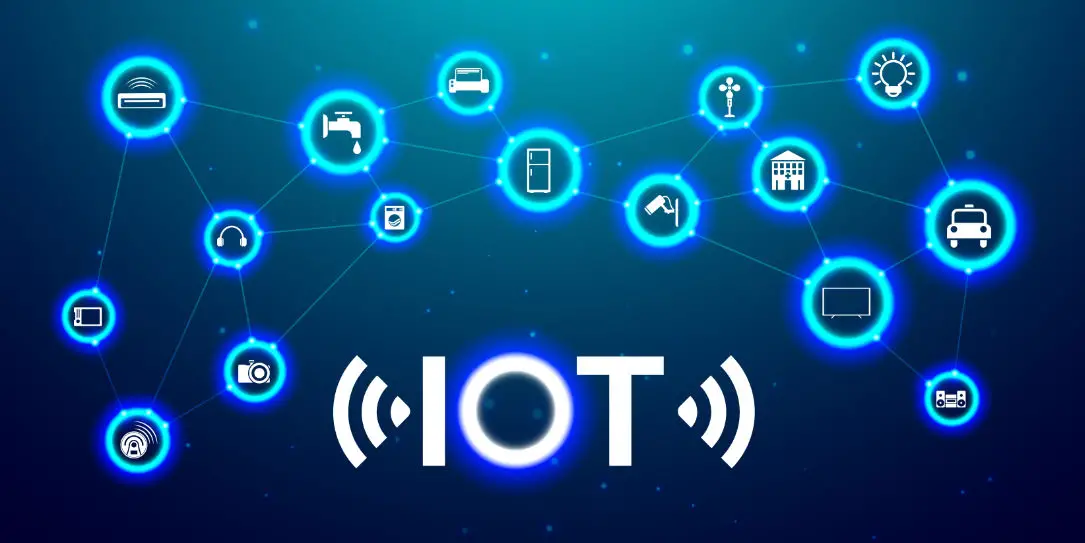Whether you’re at home or work, you’re surrounded by an entire ecosystem of IoT devices. Also known as the Internet of Things, these small elements are essential for gadgets that need to connect and communicate with each other (exchange data).
Estimated reading time: 5 minutes
From smart homes and appliances to lighting, IoT devices are everywhere — think smartphones, robot vacuums, pacemakers, smart speakers, and thermostats. If it has smart in the name, it has an IoT component integrated into the technology.
The problem is, IoTs are notoriously poorly protected — meaning they can create gaps in the security for businesses and general users at home. With that, it can leave you vulnerable to cyber-attacks and malicious hacking.
How to protect IoT devices? What are some of the top IoT security issues, and what can you do to overcome them?
#1 Lack of Visibility Within IoT Devices
By the end of 2023, it’s estimated that the number of IoT devices will reach 15.14 billion. The future forecasts even more globally connected IoT devices — projecting that the number of IoTs will surpass 29.42 billion in 2030.
Producers are already out of touch with what happens with shipped devices and components. Manufacturers are struggling to keep up with millions of IoT components, let alone secure them against hacking at all times.
The issue is that once the products are deployed and sent off to corporations and customers, original manufacturers can’t track all of the IoT devices that are used by their clients.
For security, this means that they also can’t continually ensure that the components are protected or take care of any problems that might occur on the devices.
Without keeping tabs on the IoT, there is not enough data that can give insight into the root problem that caused a possible incident or flaw in the first place.
Both new and old cyber issues can endanger the loosely protected components, especially because IoTs are often guarded by passwords that can be easily guessed or hacked.

#2 Existing Security Solutions Can’t Keep Up
Traditional cybersecurity solutions for IoTs rely on:
- Discovering vulnerabilities with tools that detect known weaknesses
- Patching up flaws starting from those that are assessed as high-risk
The main protective technique with IoT is finding a vulnerability and patching it up. With the increasingly high volume of IoT devices, this is not sustainable. Even the tools that scan for flaws can’t do so with poor accuracy or fail to identify them at all.
Another issue is that the time it takes security teams to fix weaknesses between patching leaves the devices open for exploitation by hackers.
60% of IoT devices are interlinked within the consumer market — in the space where users aren’t aware of the cyber risks that come with such devices or trust that the shipped technology is already secure.
As a result, they ignore security updates and new patches released by the manufacturers. Many customers don’t know how to apply these improvements.
For older devices that utilize IoT, manufacturers can even cease releasing the patches. That leaves devices open to malware injections and cyberattacks such as Distributed Denial of Service (DDoS), which are common for vulnerable IoTs.
#3 Unprotected Data Is Shared Between IoT’s
What kind of data can be shared via vulnerable IoT components? Depending on the device, IoT might have a user’s exact location, information about their personal daily activities, or even health-care data.
When such data isn’t encrypted, bad actors can intercept the messages that are shared between IoTs and obtain physical addresses, bank account numbers, or medical records.
Hackers nowadays are interested in data and seek vulnerabilities within systems that can lead them to information they can use to their advantage, i.e. for further criminal activity.
After accessing said data, they can leak information on hacking forums or demand ransom from a specific business that should have protected the sensitive data of their users in the first place.
Therefore, poorly protected IoT points might present just the flaw they seek in an otherwise well-guarded system that protects a business against threats actors.
Besides intercepting communications between IoTs that lack security, cybercriminals can also get to the data after it’s synced and stored in the cloud.
When the cloud environment also lacks protection, bad actors can start there to obtain the information that has been shared among the connected IoT devices.

#4 Failure to Address Security Issues of IoT Devices Early
How early? In the development stages.
Developers and security professionals often clash with one another. The first group wants to get the product out on the market as soon as possible, while the security might delay the deployment due to any security concerns.
Creating a well-performing and safe IoT device is a challenge. The small components are already limited because of their storage, memory capabilities, and more.
Tight and strict deadlines during the manufacturing process can result in many compromises — some at the cost of security.
In some instances, sacrifices have to take place even without the rush of tight deadlines.
According to research on mobile security in the healthcare segment, 37% of organizations admitted to sacrificing security in the name of a more efficient final product.
Protecting Devices With IoT Oriented Security
What to look for when securing IoT devices?
A solution that can address the major security issues of today — including poor data protection, limited visibility into devices, or old traditional tools that can’t keep pace with an increasing number of IoTs.
Traditional security solutions can’t keep up with the this technology because they haven’t been designed with these components in mind.
And IoT components aren’t going anywhere anytime soon. There will be even more of them in the future. Make sure that you prepare for it with a solution that can automatically diagnose and mitigate both new and old threats that compromise IoT-based devices.
What do you think? Please share your thoughts on any of the social media pages listed below. You can also comment on our MeWe page by joining the MeWe social network. And subscribe to our RUMBLE channel for more trailers and tech videos!










